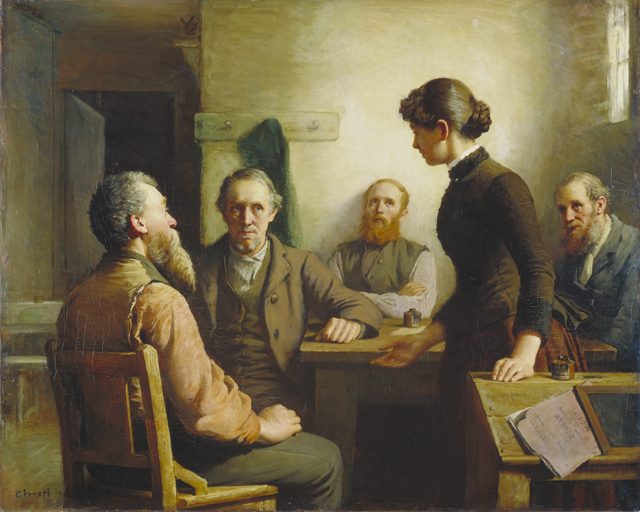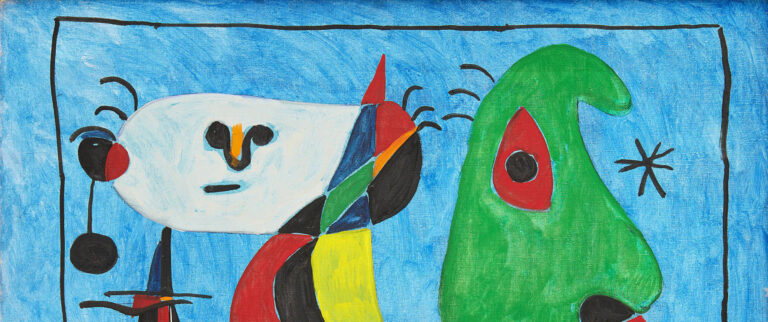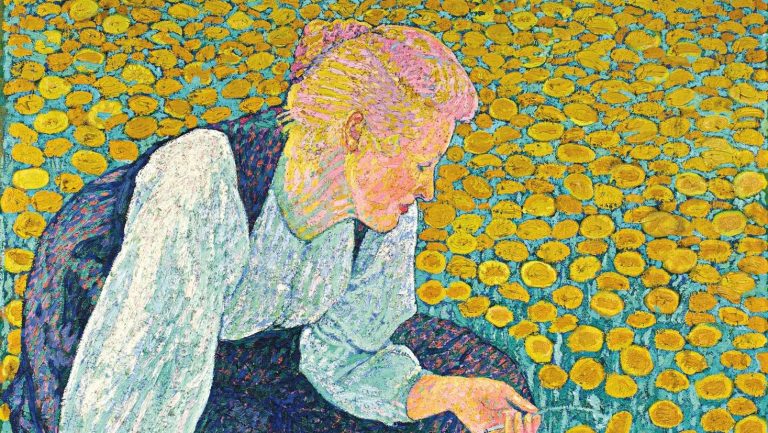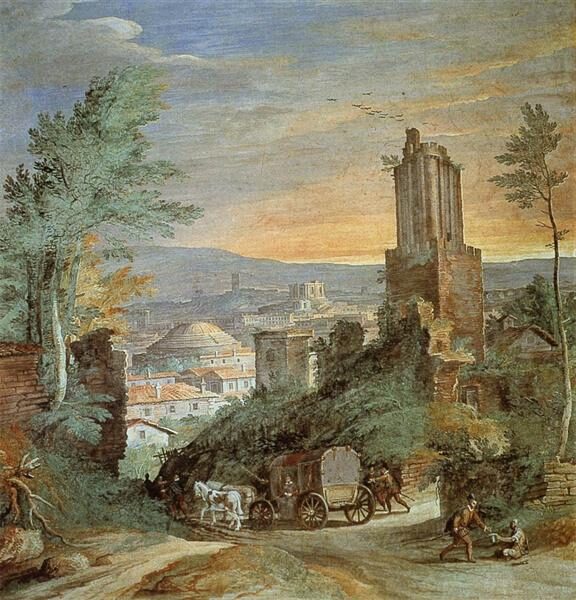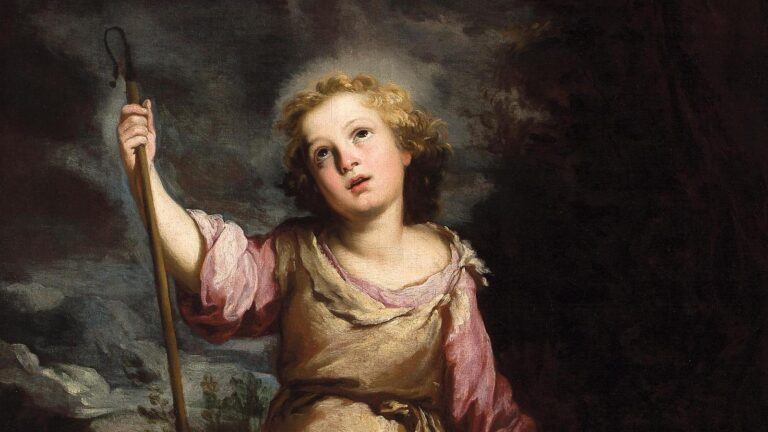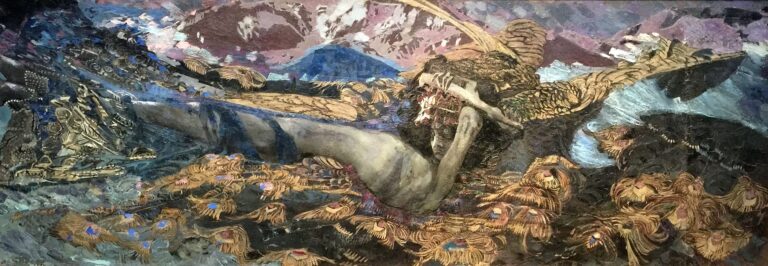6 Unforgettable Aspects: Giovanni Fattori’s Impact on Italian Art
Giovanni Fattori
Life and Career of Giovanni Fattori
Giovanni Fattori was a pivotal Italian artist whose contributions were crucial during the Italian unification. His artistic journey spans from historical and military subjects to capturing the essence of Tuscany’s landscapes and everyday rural life.
Early Life and Education
Giovanni Fattori was born in Livorno, Italy on September 6, 1825. His initial education in art began at the Academy of Fine Arts in Florence, under the guidance of artists c. He was greatly influenced by the works of Ugo Foscolo, Francesco Domenico Guerrazzi, and Walter Scott. Moreover, Fattori’s exposure to Ingres and other Florentine artists at the Caffè Michelangiolo was instrumental in shaping his artistic perspective.


Association with the Macchiaioli Group
Fattori became integral to the Macchiaioli group, a circle of Italian painters congregating around patron Diego Martelli. The Macchiaioli artists, who included Giovanni Costa and Federico Zandomeneghi, are considered forerunners of the Impressionists. Fattori’s association with this group marked a shift in his work, with a focus on capturing light and colour. His subjects included Tuscan landscapes and scenes from contemporary rural life, such as “Roman Carts.”

Later Years and Legacy
As an esteemed professor at the Accademia in Florence, Fattori mentored many aspiring artists. In his later years, his work received acclaim beyond Italian borders, with exhibitions held in Parma, London, Vienna, and Dresden. Fattori passed away on August 30, 1908. His legacy endures through his influence on Italian art, notably as a leading figure amidst a crucial period of change during the Italian unification. His works continue to be a testament to Macchiaioli’s innovative approach to depicting the Italian landscape and society.

Artistic Style and Influences
Giovanni Fattori played a pivotal role in the evolution of the Macchiaioli movement, known for its innovative use of light and shadow in art. His style reflects a blend of realism and impressionistic touches, greatly influenced by his encounters with the Barbizon School and the broader Impressionist movement.
Development of the Macchia Technique
The Macchia technique embodied the core of Fattori’s artistic approach. “Macchia” translates to “patch” or “spot” and is indicative of a method where bold, unblended patches of colour are applied to capture the essence of a subject rather than its details. This hallmark technique is evident in his rural scenes, military subjects, and portraits where realism converges with the play of natural light and shadow, forming a distinctive painting style. Castiglioncello, a region known for its picturesque landscapes, became an open-air studio for the Macchiaioli, where Fattori honed this technique.

- Common themes in Fattori’s Macchia works:
- Historical scenes, especially those depicting military life
- Rural landscapes featuring daily life and work
- Portraits, often display intimate observation of the subject
Influences from the Barbizon and Impressionist Movements
Fattori’s style did not emerge in isolation. His early acquaintance with Roman landscape painter Giovanni Costa steered him towards painting en plein air, a practice favoured by the Barbizon School. This group of artists emphasized capturing the atmosphere and transient effects of light in their landscapes a philosophy that resonated with Fattori.

He assimilated these ideas into his own work, while also acknowledging the impact of the Impressionist movement. His paintings and etchings reveal a keen interest in the immediacy of sensation, a trait that positions him as a forerunner to the later Impressionists. Even though Fattori maintained a focus on realism in his representation of contemporary life, the influence of these movements can be discerned in his freer brushstrokes and nuanced lighting.
Key Works and Themes
Giovanni Fattori, a pivotal Tuscan painter, explored varied themes in his art ranging from landscapes and military scenes to everyday genre subjects, each characterized by a distinctive handling of material and light.

Depictions of the Maremma Region
Fattori’s works often featured the Maremma, a coastal area of western central Italy known for its landscapes. “Pause in the Maremma with farmers and ox-cart” is one such piece capturing the region’s essence. His paintings reflected the life of peasants, cattle, and the land itself, often portraying cowboys and herds amidst the vast Maremma scenery. “La Rotonda di Palmieri” is another notable work that represents this interest in depicting contemporary life within rural settings.



Military and Historical Paintings
Fattori’s military subjects are some of his most recognized works. He illustrated scenes of military life during the Risorgimento, the movement for Italian unification. “The Italian Camp at the Battle of Magenta” and “After the Battle of Magenta” are prominent examples where Fattori captured the rawness and chaos of war, defying the romanticized vision of military glory of his era. His focus on soldiers, the material aspects of warfare, and the battlefield’s landscape was groundbreaking. His painting “The Battle of San Martino” is a further testament to Fattori’s dedication to portraying historical reality without the lack of decorative qualities.

Portraiture and Genre Scenes
Alongside grand landscapes and historical narratives, Fattori was also adept at portraiture and smaller-scale genre scenes. He painted personal and intimate representations of contemporary figures, such as in his self-portrait, which hangs in the Museo Civico Giovanni Fattori. His genre paintings often portrayed the everyday activities of peasants, like in “La Cugina Argia”, which showcases his ability to capture ordinary moments with raw and candid honesty. His subjects were drawn from his observations of life around him, from nurses to horse markets, as seen in “Horse Market at Terracina”.
Throughout these themes, Fattori’s connection to Italian plein-airists like Giuseppe Abbati is evident, as is the influence of his European contemporaries such as Camille Pissarro, Édouard Manet, and Corot, although Fattori maintained his unique approach to composition and tone. His contribution to Italian art is honoured through his works displayed in places like Palazzo Pitti, attesting to his role in shaping the visual narrative of a transforming Italy.

Frequently Asked Questions
This section addresses common questions about Giovanni Fattori, providing insight into his artistic contributions and style within the context of Italian art history.
What artistic movement is Giovanni Fattori known for being a part of?
Giovanni Fattori was a pivotal figure in the Macchiaioli movement, which was an Italian art movement of the late 19th century characterized by loose brushwork and an emphasis on light and colour.

Can you describe the characteristics of Giovanni Fattori’s painting style?
His painting style is recognized for its bold use of colour and light, creating a sense of realism through a technique that emphasized dappled light and shadow, a characteristic of the Macchiaioli style.
What are some of Giovanni Fattori’s most famous artworks and why are they significant?
Fattori’s most renowned artworks include “The Battle of Magenta,” “The Camp at Avezzano,” and “Maremma Riders.” These paintings are significant for their historical narrative content and for capturing the essence of the Tuscan landscape, shaping the identity of regional Italian painting.
How did Giovanni Fattori’s work contribute to the development of Italian art?
His work contributed significantly to the development of Italian art by breaking away from the traditional academic standards of painting and introducing an innovative approach to depicting light and everyday life.
What were the common themes and subjects in Giovanni Fattori’s paintings?
Fattori frequently painted landscapes of the Tuscan Maremma, scenes of peasant life, and military episodes from the Italian wars of independence, reflecting his interest in both social realism and historical events.
How has Giovanni Fattori’s work been received and interpreted by art historians?
Art historians have interpreted Fattori’s work as a representation of the socio-political changes in Italy, particularly during its unification, and his contributions to the Macchiaioli movement have led to a deeper understanding of this period in art history.



